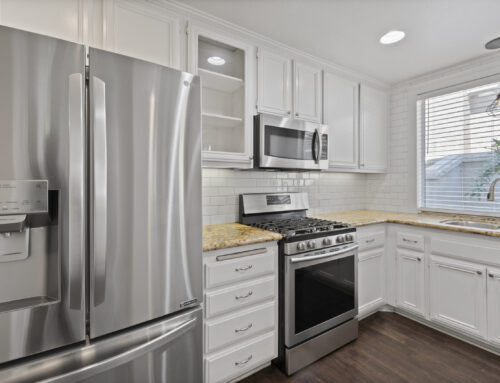Although the year 2020 is still a few years down the road, we’re already starting to see the impact made by this official R-22 phase-out date. (Read: Soaring prices for refrigerants!) As a homeowner, that means it’s time to start thinking seriously about your options. But why exactly are we having to phase out? And what steps are involved in transitioning out of R-22? Is it something you can do yourself, or does it require a professional? Don’t worry. We’re here to help. Here are answers to some of the most frequently asked questions about the R-22 refrigerant phase out.

What is Freon® (R-22) and why is it so bad?
R-22 (commonly known as Freon) has been the main refrigerant — the substance that cools air — used in residential and commercial air conditioners for decades. The U.S. Environmental Protection Agency (EPA) determined, however, that R-22 has actually been harmful to Earth’s ozone layer; therefore, the EPA has implemented a nationwide R-22 refrigerant phase out.
Because of its ozone depletion characteristic, production of heating, ventilation and air conditioning (HVAC) units that use R-22 has been stopped. And the EPA requires that the production of the refrigerant itself come to a complete halt by the year 2020.
What are the replacement options for R-22?
According to the EPA, there are several ozone-friendly refrigerant options that are available and widely used today to replace R-22. The new HVAC units that are being produced include the most common of them: R-410A, otherwise known as GENETRON AZ-20®, SUVA 410A®, Forane® 410A and — most recognizably — Puron®.
What are the steps to transition from R-22?
Unfortunately, transitioning from one refrigerant to another is not as easy as simply substituting one for another when you run out. Rather, if you’re not going to replace your unit entirely, changing your current unit so it works with a different refrigerant is a process that requires expertise and, therefore, a trained professional.
To update an R-22 unit to an R-410A one, for example, could involve the following:
- Replacing the A/C unit, evaporator coil and furnace
- Replacing the copper lines that connect the components, if they can’t handle the higher pressures of R-410A
- Removing ALL moisture from the system and ensuring it is free of leaks (which includes using a specialized vacuum for several hours to make sure all traces of water vapor have been removed)
If any part of the update is not completed accurately, your system will quickly fail.
What role does the homeowner play in this transition?
First, you need to determine if this is even an issue for you. To find out which type of refrigerant your unit uses, check the nameplate on the outdoor condenser. If there’s no nameplate, review your owner’s manual or contact the company that sold or services your unit. If you know the manufacturer and model number, you could also contact the manufacturer to get the information.
If your unit does, in fact, use R-22, it’s time to start considering your options. Sure, you can continue to get your A/C serviced until R-22 supplies are depleted; however, with the supply dwindling, you can expect the price of R-22 to soar. To put it in perspective, an AHS® Home Warranty plan currently covers up to $10/pound of refrigerant. The retail price for R-22 could increase to over $100/pound in the near future, though (if it hasn’t already in some areas).
Another option is to have your unit updated to begin functioning with an alternative refrigerant, like R-410A, as described above, to be compliant with the EPA’s regulations.
And although a total system replacement is quite an investment, it may end up being more cost-effective than simply “riding it out” for a while. You especially may want to consider going ahead and replacing your unit if:
- It’s at least 10 years old already.
- You’ve experienced consistent cooling issues.
- Your energy bills have begun to increase.
- You’re now on a first-name basis with your A/C repairman.
After all, a new unit isn’t just ozone-friendly — it’s also more energy-efficient, too. Who wouldn’t want to save on energy bills each year?
What role does American Home Shield® play in this transition?
At AHS, we’re working hard to minimize the impact of this phase out. In fact, to address some of the potential effects, in addition to still offering evaporator coil replacements (when needed) and topping them off with R-22 until the supplies are depleted, we’ve created two unique opportunities for our customers:
Full System Upgrade to a 410A 14 SEER Unit
Today, many contractors in the AHS network offer the opportunity to upgrade to a more efficient HVAC unit. For those contractors who don’t currently offer this upgrade opportunity to our AHS customers, we’re rolling out a new HVAC Upgrade program. This will allow more contractors the opportunity to support customers in certain markets by providing them with the ability to purchase and have installed a Carrier® brand full-HVAC system replacement at a discount.
R-22 Refrigerant Replacement
If a line leak or compressor replacement issue requires R-22 refrigerant to charge the unit, you can choose to replace it with an EPA-approved alternative refrigerant like R-407C. This can be a cost-effective option when you consider the cost of R-22 compared to a new compressor, the alternative refrigerant, line flush labor and trade service call.
—
Originally published by American Home Shield
For more information about the R-22 refrigerant phase out, visit AHS.com or call 888 429 8247.






